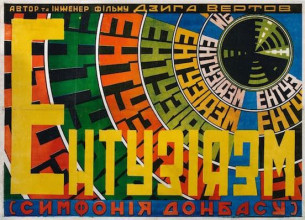The Russian Revolution
Theme
2017 marks the centenary of Lenin’s rise to power, and his efforts to establish a Soviet state founded on communist principles. This social transformation was closely followed by radical left-wing artists involved in the periodical De Stijl, which was founded by Theo van Doesburg. He was a visionary artist who, as the end of the Great War approached, envisioned a world risen from the ashes, a world communicated by a new mentality and a new, impersonal, abstract visual language. Figuration and self-expression, manifestations of individualism and personal interest, had to disappear. Art and life would unite to form a better world. The first issue of De Stijl was published in October 1917, roughly coinciding with the outbreak of the Russian Revolution.
The Stedelijk Museum gathers 100 Years of De Stijl and the Russian Revolution in various Stedelijk Turns-presentations. Apart from the fact that both share the same commemorative year, this confluence is also motivated for art historical reasons:
In the 1920s, communist De Stijl artists like Chris Beekman and the architect Robert van ’t Hoff, approached Kazimir Malevich to learn about the latest directions in the Russian avant-garde. During this time, El Lissitzky was promoting Russian Constructivism and Suprematism in Germany. There, he met Theo van Doesburg and became a contributor to De Stijl.
In the 1950s, through the efforts of Willem Sandberg and Hans Jaffé, the Stedelijk was influential in cementing the place of De Stijl in the artistic canon. In 1958, the museum acquired the – now famous – Malevich collection. Along with works of De Stijl artists like Mondrian, Van Doesburg and Van der Leck, this collection comprises an ensemble that offers unique insights into geometric abstract art produced between the two world wars.

